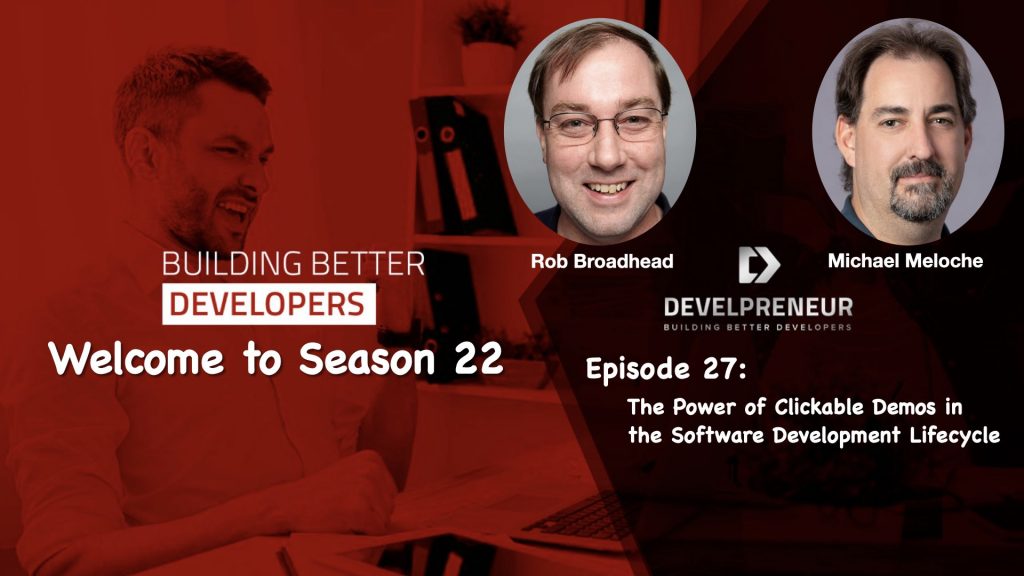One of the most valuable tools you can utilize in the journey of becoming a better developer is the clickable demo. This episode of our developer series delves deep into the importance of prototypes, wireframes, and proof of concept demonstrations, especially in the critical phases of requirements and design. Let’s explore how clickable demos can bridge the gap between your vision and your customer’s expectations, ensuring that both parties are aligned before any significant code is written.
What is a Clickable Demo, and Why Does It Matter?
A clickable demo is a prototype that goes beyond static documents or flowcharts. Instead of just reading through user stories or requirements, a clickable demo allows your users or customers to interact with a mock-up of the application. This hands-on approach is invaluable because it shows, rather than tells, what the final product might look like. It’s a powerful way to ensure that both the development team and the stakeholders are on the same page.
Building Effective Clickable Demos: Focus on High-Risk Items
When constructing a clickable demo, it’s crucial to focus on high-risk areas—those aspects of the requirements or user stories that are most likely to confuse. For example, suppose the requirements state that a user needs to log in. In that case, your clickable demo should not only show the login screen but also clarify what information is required, like how data will be entered and what the user will see afterward. By addressing these high-risk items early in your clickable demo, you can prevent misunderstandings that might arise later in the development process.
Tools for Creating Clickable Demos Without Writing Code
You don’t need to dive into code to create a clickable demo. In fact, one of the fastest ways to produce a prototype is by using tools like PowerPoint. By piecing together screenshots or simple mock-ups, you can create a basic clickable demo that allows stakeholders to click through and experience the flow of the application. For more advanced needs, tools like Miro, Figma, or JustInMind offer additional functionality, enabling more detailed wireframes and even limited interactive elements—all without writing a single line of code.
Avoiding Pitfalls in Clickable Demos: Keep it Simple and Relevant.
When designing a clickable demo, simplicity is vital. Resist the temptation to perfect the design or implement complex features. The purpose of a clickable demo is to quickly gather feedback on the functionality and flow, not to finalize the look and feel. Also, be mindful of the data you include. For instance, if you’re demonstrating a customer management system, ensure that the data used in your clickable demo is realistic and relevant to the users. This prevents unnecessary distractions and keeps the focus on the demo’s purpose.
Using Clickable Demos to Guide Development
A well-crafted clickable demo can serve as a foundational guide for the actual development process. Once you’ve validated your concepts through the clickable demo, you can use it as a reference point for coding. Additionally, storing components from various clickable demos in a library can save time on future projects, allowing for quicker prototyping and more efficient development cycles.
Balancing Design and Functionality in Clickable Demos
While focusing on functionality is essential, the design should not be entirely neglected in your clickable demo. Some users may find it challenging to visualize the final product if the prototype is too rudimentary. However, be cautious—overemphasizing design can lead to scope creep, where users request additional features or aesthetic changes not part of the original plan. A clickable demo aims to facilitate rapid feedback and iteration, ensuring that the core functionality is nailed down before moving on to more detailed work.
The Value of Clickable Demos in Development
Clickable demos are an essential tool in modern software development. They allow developers and stakeholders to communicate more effectively, identify potential issues early on, and ensure that the final product meets everyone’s expectations. By focusing on high-risk areas, keeping designs simple, and utilizing the right tools, you can create clickable demos that streamline the development process and enhance the overall quality of the software you deliver. Whether working on a new application, a feature update, or a complete rebuild, incorporating clickable demos into your workflow is a surefire way to improve communication and efficiency.
Stay Connected: Join the Developreneur Community
We invite you to join our community and share your coding journey with us. Whether you’re a seasoned developer or just starting, there’s always room to learn and grow together. Contact us at [email protected] with your questions, feedback, or suggestions for future episodes. Together, let’s continue exploring the exciting world of software development.

